El Paso officials trying to avert humanitarian crisis after migrants dropped Downtown
EL PASO — A text from Border Patrol Sector Chief Gloria Chavez lit up El Paso County Judge Ricardo Samaniego's cell phone at 5:53 a.m. on Sunday.
She delivered the news: Border Patrol's Central Processing Center in El Paso was massively overcrowded. To relieve the strain, more than 100 asylum seekers were released Downtown, and they were on their own.
It was a relatively small group, given that Border Patrol had been taking in more than 1,000 people a day. There were people from Haiti, Ecuador and Turkey; all had legal documents and U.S. destinations in mind and quickly scattered in taxis and ride-shares.
Samaniego saw a red flag waving.
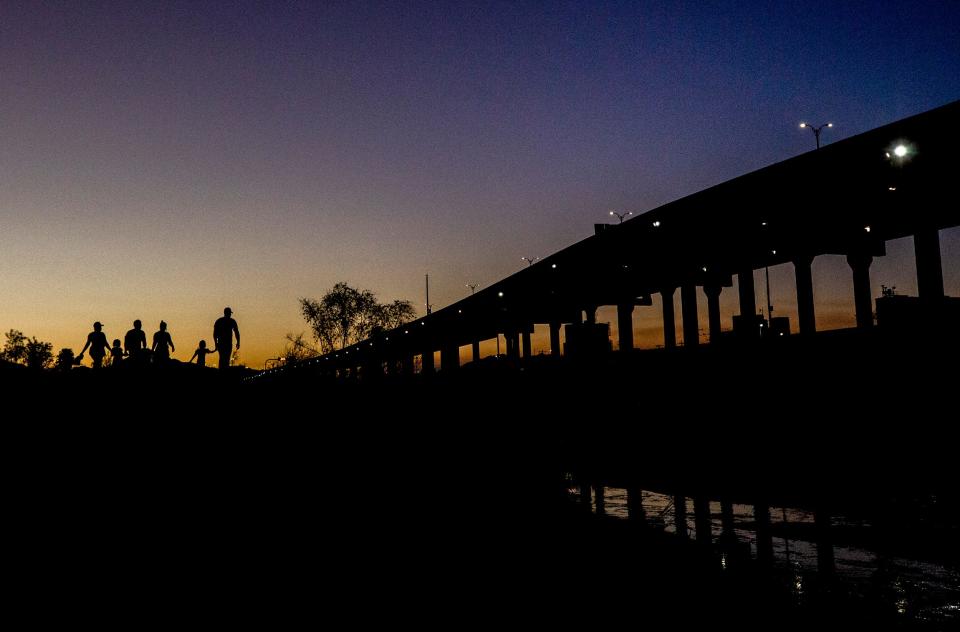
What if their travel plans didn't pan out? What if they were carrying too much cash or no money at all? What if smugglers began to prey on them, easy targets as they were with their papers in hand and their orange government-issue clogs? What if, next time, it wasn't single adults but families with small children?
U.S. border communities are facing a real risk that the arrival of thousands of asylum seekers waiting in Mexico could turn into a humanitarian crisis, if managed poorly.
On the eve of the end of a federal pandemic policy known as Title 42, leaders along the Texas border are re-evaluating the role local governments should play in managing a new chapter of human migration.
More: Border Patrol capacity strained, 100 migrants released in Downtown El Paso
Samaniego had bad memories from three years ago when — under different leadership — Border Patrol dealt with overcrowding in its facilities by releasing asylum-seeking migrant families to the street at all hours or holding them in a chain-link pen under the Paso del Norte bridge. He remembered when Border Patrol, that same year, kept hundreds of unaccompanied children in cells that were crowded and unsanitary, infuriating local residents and immigrant advocates nationwide.
Chavez came to Border Patrol's El Paso sector to steer the agency out of those crises, and she did.

The next challenge is rapidly taking shape.
By April, Border Patrol in El Paso was winding down its use of Title 42 and expelling migrants at a much lower rate than a year ago, at the same time that thousands more asylum seekers were arriving. On Sunday, the agency's new Central Processing Center in El Paso, designed to better accommodate families and children during processing, had reached an alarming population. Chavez confirmed there were 4,800 people in facilities designed to hold 1,700.
Some migrants who show a "credible fear" of persecution in their home countries may legally seek asylum again, once Title 42 expulsions end.
Samaniego and Chavez had been in constant contact for months, in a group chat of federal and local stakeholders.
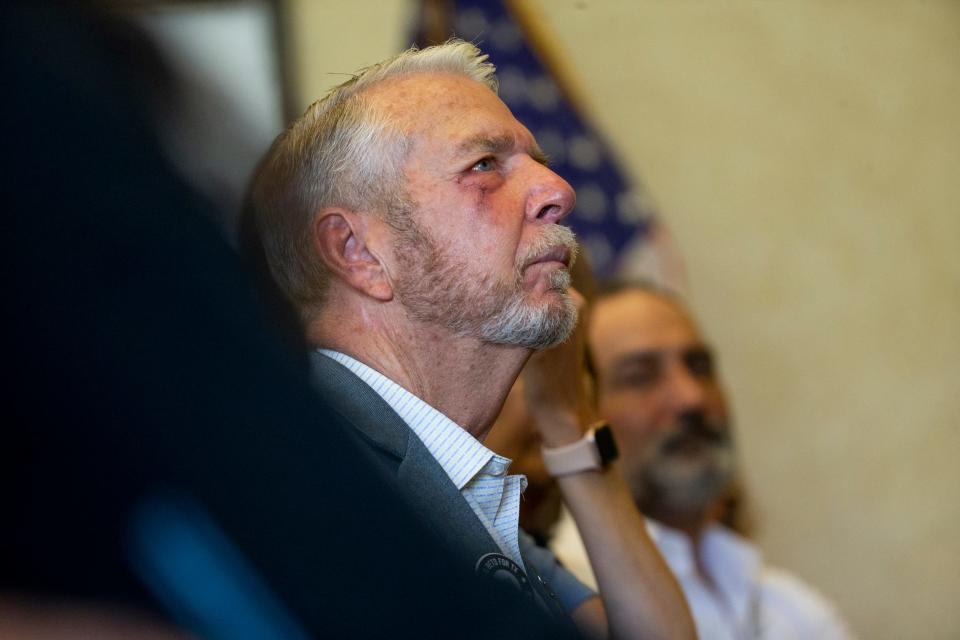
"I have been updating them for awhile," Chavez said. "It’s a small group of people on my ‘close’ list. As I started seeing the uptick in Haitian nationals, I said, 'I want to be proactive and make sure they had situational awareness.'"
Samaniego tapped out a response on his cell phone: "That morning, I said, 'Is there any way that I can be there, that I can get a tour?'"
"We know that the numbers are different," Samaniego told the El Paso Times. "When the numbers change, your strategy cannot remain the same. I needed to see it firsthand."
Chavez said, yes.
Looming crisis, 'if we don't all come together'
Samaniego and other El Paso county and city officials are now looking at how they can deflect a potential humanitarian disaster should the number of asylum seekers outpace the region's ability to receive them. City and county officials said they are preparing to issue emergency declarations, giving them access to additional state and federal funds.
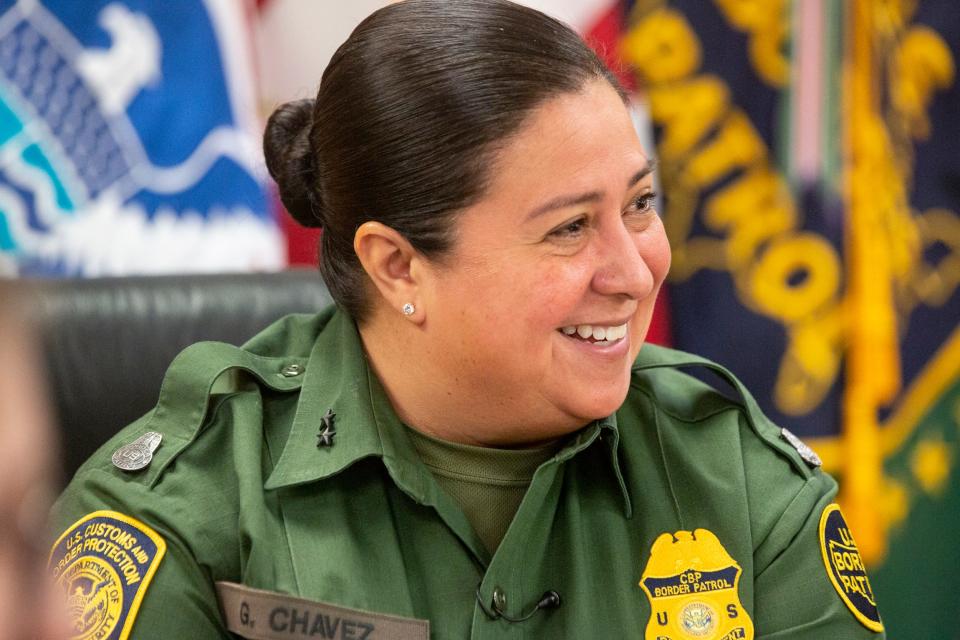
Samaniego, commissioners and administrators on Thursday publicly discussed options to bridge the gap for migrants, between when border authorities release them and when they they depart to their destinations beyond the Borderland.
Ideas were floated including: dedicating a large space to receive and process asylum seekers; expanding the services of the county's Opportunity Center; mimicking a hospitality site that has worked well for another Texas border town; or hiring a contractor to handle processing.
Border Patrol in El Paso typically releases asylum seekers to the Annunciation House migrant shelter network, but Executive Director Ruben Garcia has said he cannot scale up to meet the expected need and has asked federal, county and city officials to step in.
With Title 42 expulsions expected to end on Monday — pending a challenge in federal court — there isn't much time.
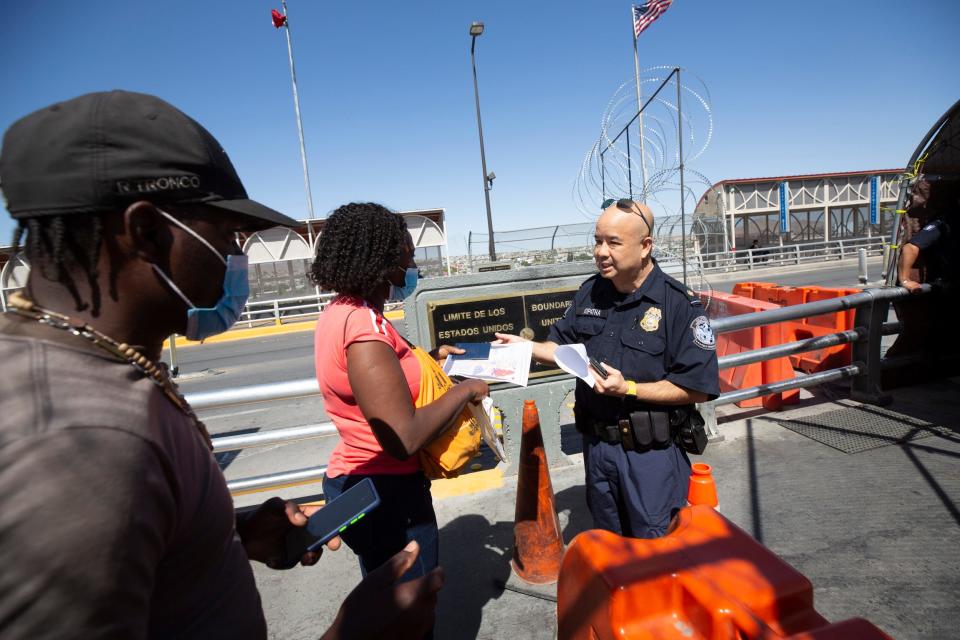
"I don’t want to alarm anyone but if we don’t do the right things, if we don’t all come together, it could be a crisis for us," Samaniego told the commissioner's court on May 17.
Two days later, Chief County Administrator Betsy Keller said administrators planned to tour the Brownsville, Texas, hospitality site, where city staff receive people recently released from Border Patrol custody at a Downtown bus depot. Staffers coordinate with the federal government and help the newcomers book travel arrangements to their destinations in the U.S. A nonprofit nearby provides refreshments.
It's a setup that has won praise from immigrant advocates and Homeland Security officials alike and has caught the county's attention.
"Brownsville is processing 1,800 people per day without requirement for shelter," Keller told the commissioners on Thursday. "It’s like a hub. They’re going to the airport, to the bus station or to other locations to get flights out. We’re going to tour that model as quickly as we possibly can."
Brownsville Mayor Trey Mendez told the El Paso Times his community is ready for the end of Title 42.
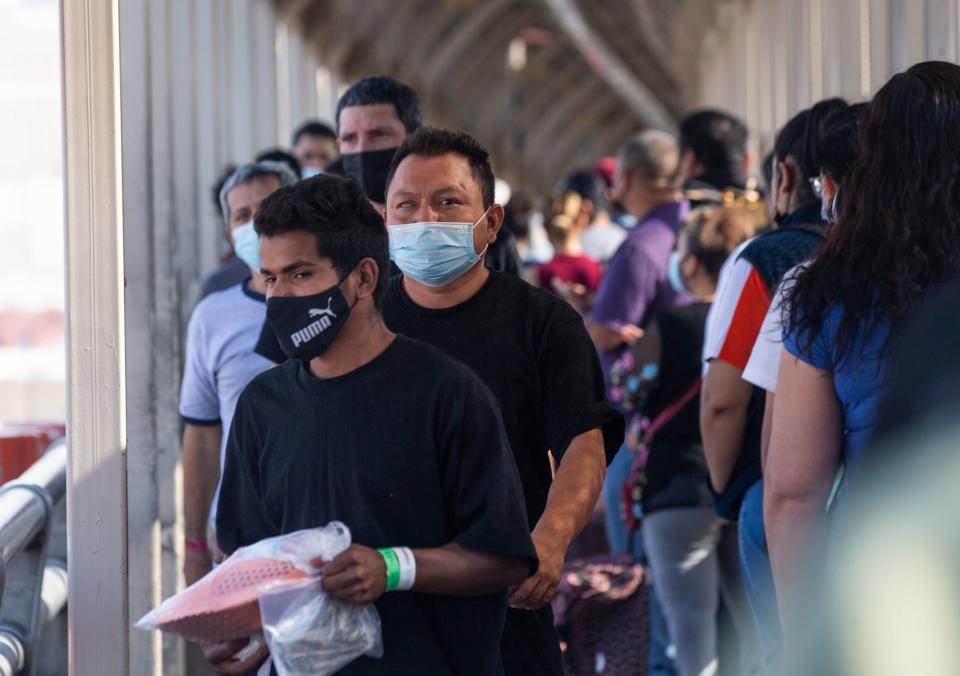
"We focus on getting people in and getting them out," he said. "Because we are so efficient, our community doesn’t really see any fallout. The individuals seeking asylum are not being released into the streets, loitering around or being sheltered in our community. In Brownsville, we really focus on making it about the dignity and respect for individuals who are coming."
"We’ve been ready for months," he said.
A revelatory tour
On the Sunday morning when the asylum seekers were released, Samaniego rushed to meet Chavez at Border Patrol's administrative offices on Montana Avenue in El Paso.
The chief and county judge got into an unmarked government SUV and by 9:30 a.m. were headed for the Paso del Norte bridge. Assistant Fire Chief for Emergency Management Jorge Rodriguez joined, too.
Samaniego was getting a firsthand look at the Border Patrol's day-to-day challenges — and a forewarning.
In April, Border Patrol in El Paso reported more than 29,000 migrant encounters, up from nearly 20,000 encounters during the same month last year.

It was the third straight month of increases, and fewer of the encounters were resulting in expulsion. Last month, Border Patrol reported that 50% of migrant encounters, or more than 14,000, resulted in a Title 42 expulsion. A year ago in April, 82% of encounters, or more than 16,000, resulted in a Title 42 expulsion.
As the head of Border Patrol's sprawling El Paso Sector, which includes 268 miles of border in West Texas and New Mexico, Chavez has been managing the spike in people seeking entry into the U.S. and communicating with local officials.
Samaniego would tell the commission on Thursday: "In 2019, I can remember we didn’t have the level of collaboration that we have at this time." Chavez told the El Paso Times, "In 2019 that coordination didn’t exist."
Stakeholder engagement is invaluable especially at times of high illegal entries at the border. Partnering with our #ElPaso County and City leadership benefits our communities. #ThankYou for the support you give our #USBP Agents. @ElPasoTXGov @EPCountyJudge @ElPasoOEM pic.twitter.com/Js0zrJSXMq
— Gloria I. Chavez (@USBPChiefEPT) May 16, 2022
They spent the next four hours together.
They toured the Border Patrol station at the Paso del Norte bridge.
They stopped by the break in the border wall near Chihuahuita, the neighborhood just north of the Rio Grande, where many migrants who have been waiting in Juárez for up to two years are surrendering to Border Patrol, hoping for asylum or other relief.
They rode to the Tornado bus depot on Paisano Drive, where the group had been dropped that morning. The depot's blue-and-red façade advertised 27 destinations from Dallas to Detroit, Austin to Atlanta, but many of the migrants decided they wanted to fly.
They toured through the Border Patrol's packed Central Processing Center off Highway 54 in Northeast El Paso, through an annex and a site set up to provide medical care.
Chavez and Samaniego ended their tour at the El Paso International Airport, where some of the newcomers discovered that airline counters wouldn't take cash; or flights were too expensive or seats were unavailable that day. Several had been scrambling to find affordable hotel rooms, pacing while they talked to family members on cell phones.
By 2:30 p.m., the county judge had come to a conclusion.
The number of asylum seekers arriving at the El Paso border "is truly testing the existing system," he explained in a text message. "We now need local government to step in to relieve Chief Chavez from tasks that are clearly beyond her control."
Chavez appreciated that Samaniego and Rodriguez understood the need.
"We’re trying to communicate and align and facilitate the safe and humane release of migrants at the border," she said. "It made me feel we are not alone in this."
More: The US built a taller border wall. Migrants are falling, and their injuries are life-altering
'Safe and humane'
Border Patrol exercises all its options for processing migrants, Chavez said: Title 42 expulsion, expedited removal, U.S. Immigration and Customs Enforcement detention, release to a nonprofit organization.
"Lastly is the safe and humane releases into the city," she said.
Five days after the Sunday release of asylum seekers Downtown, crowding at the Border Patrol's Central Processing Center had declined dramatically.
Border Patrol leaned heavily on Title 42 expulsions all week while the policy remained in place. ICE flew in six planes, Chavez said. Flights from El Paso to Haiti returned more than 800 Haitians to a country in the midst of a political and economic crisis that many had fled for their lives.
"We will exercise all those pathways as needed," Chavez said. "But I’m getting concerned about the high numbers we have in the El Paso region. As an alliance of community leaders, how do we address these migration challenges?"
Lauren Villagran can be reached at lvillagran@elpasotimes.com.
This article originally appeared on El Paso Times: El Paso officials ponder immigration role as Border Patrol hits limit

